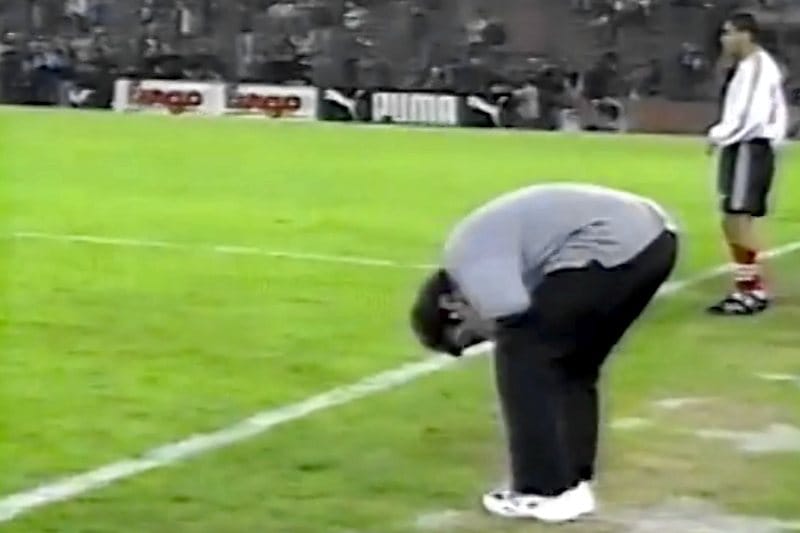Rock concert: Vélez Sarsfield vs Huracán, 1998
A gap opens up, then someone appears, a player or member of staff, I'm not sure; they open their arms wide and hug Marcelo, and Bielsa's arms are like a flytrap closing around him, hugging him back.
Last time here we saw Marcelo Bielsa failing and upset, and there's plenty of that out there. But let's take a look at him succeeding — if you visualise positivity, you can be positivity, and other corporate new age nonsense.
But Bielsa's time at Vélez Sarsfield, after Newell's Old Boys and work in Mexico, doesn't get much attention. He was only there for one season, leaving for Espanyol in Spain, a job he soon left to become Argentina's national coach, a much richer story. But, at Vélez, he won something.
That wasn't necessarily a surprise. The five years from 1993 were a golden age for Vélez: they won the Clausura, the Copa Libertadores, the Intercontinental Cup (a 2-0 win over Milan), the Apertura and Clausura in 1995/96, the Supercopa Sudamericana, the Interamericana Cup and the Recopa Sudamericana. They did it with a squad of homegrown players: when Bielsa took over, only three of his main squad hadn't come through Vélez's own ranks. One of the signings was Jose Luis Chilavert, practically an institution in the side; another key player was the captain, Mauricio Pellegrino, who later managed Southampton.
Bielsa was given the sort of task he has avoided in the years since: to take a team of champions, and continue their success. It wasn't easy. He argued with Chilavert when the goalkeeper took issue with Bielsa's claim that the reserve players were just as important, and just as able, as the first team stars; Chilavert threatened to leave, missing the start of the season and gripping the sporting press. The rest of the team were just as grumpy; they'd won everything there was to win, so why should they work as hard as Bielsa was demanding to change their methods, when they knew what they were doing?

A 4th place finish in the Apertura, the first of the split Argentinian league season, and finishing bottom of the Copa Sudamericana was an indication of the unhappiness, and a sign that Bielsa was right. The Clausura, the second half of the league, was a different story. Vélez went top of the table after the third round of matches, and stayed there. In round 16 their nearest challengers, Lanús, drew 2-2 with Estudiantes, while Vélez beat Ferro 4-1; the gap was four points, maintained in round 17 when both teams won. Whatever Lanús did in round 18, the penultimate round, wouldn't be enough if Vélez beat Huracán at home. The Clausura title was in Vélez's grasp.
The television coverage reflects Vélez's four point advantage. Their fans are arriving in a good mood, singing to the cameras, dancing in blue and white headscarves, facepaint, comedy masks, outsized hats and jester hats; they're waving flags and holding toy frogs. Estadio José Amalfitani, in Buenos Aires, looks packed close to its 49,000 capacity; the flags, ticker tape and smoke bombs are recognised by the players with a disorganised version of the 'Leeds Wave' from the centre circle.